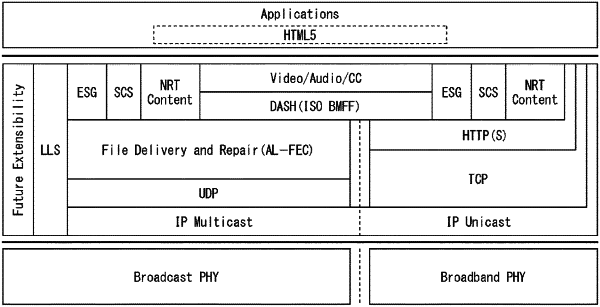| CPC H04N 21/2343 (2013.01) [H04N 21/2381 (2013.01); H04N 21/25891 (2013.01); H04N 21/435 (2013.01); H04N 21/438 (2013.01); H04N 21/482 (2013.01)] | 18 Claims |

|
1. A reception device comprising:
processing circuitry configured to:
tune to receive a digital broadcasting stream using an Internet Protocol (IP) transmission scheme;
perform a filtering process on packets on the digital broadcasting stream to identify signaling packets that include tuning information and setting information for accessing a description of a particular service;
extract, from the identified signaling packets during an initial scanning process, the tuning information;
store the tuning information extracted during the initial scanning process in a memory; and
after the tuning information is stored, perform a tuning operation for a service and control a tuning process executed by the processing circuitry based on the tuning information stored in the memory,
wherein the tuning information is received based on a first protocol layer of a protocol stack of the IP transmission scheme, the description is received based on a second protocol layer of the protocol stack, and the first protocol layer is lower than the second protocol layer.
|